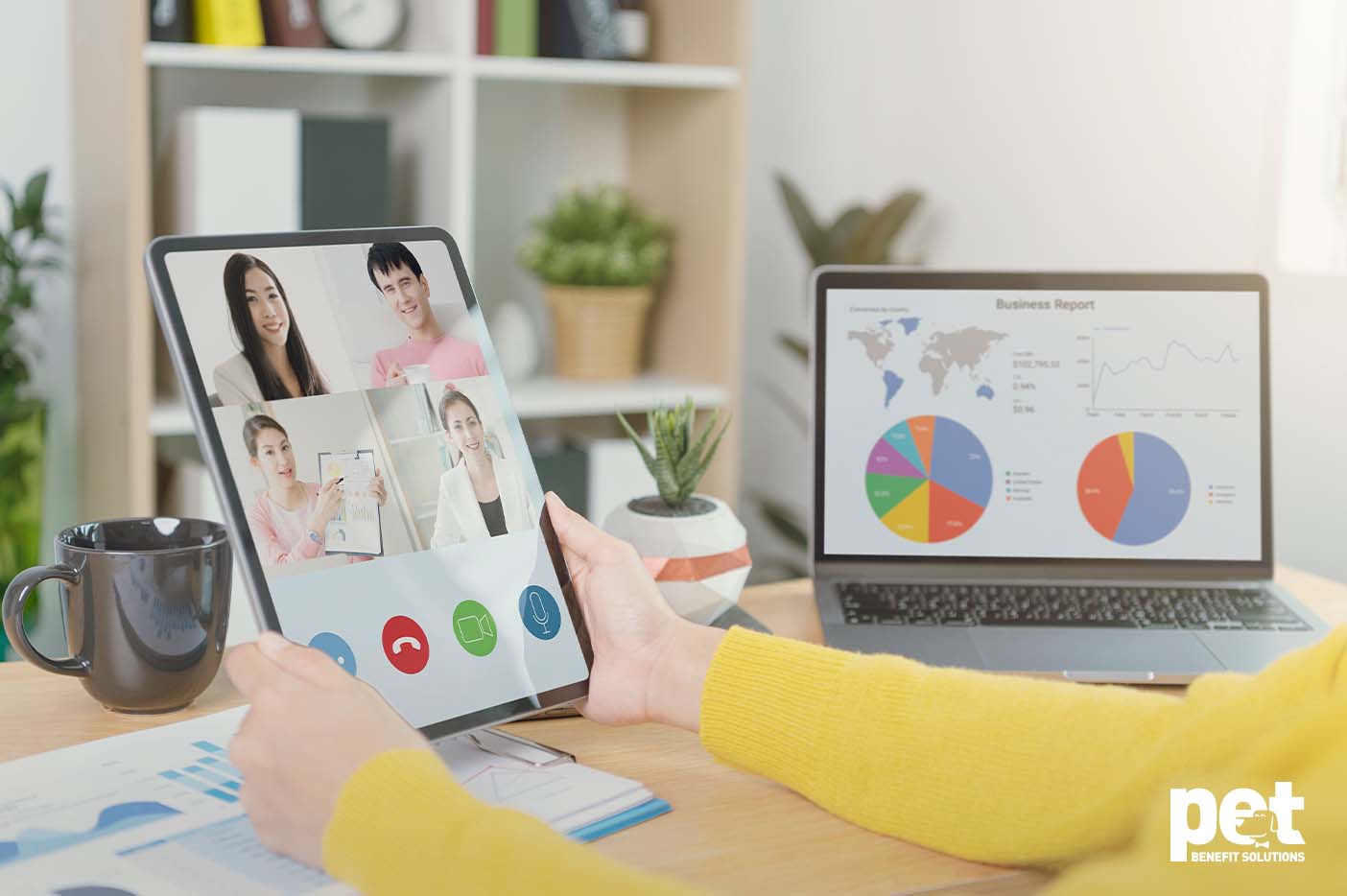
Lessons from OE 2020!
Last year, engagement in Open Enrollment benefit fairs grew by an incredible 300%-400%. Employees attended more sessions, spent more time researching benefits, and explored new options. Here’s how to keep up that momentum in 2021.
How COVID Revitalized Open Enrollment in 2020 and Beyond
“If it ain’t broke, don’t fix it.”
But what if it was fundamentally broken, and no one realized?
HR managers in businesses of all sizes are feeling that way about Open Enrollment. In 2020 they desperately scrambled to run OE remotely. It wasn’t easy, but looking back, going virtual may have been the best thing that ever happened to Open Enrollment.
Virtual OE innately solved many of the problems that plagued Open Enrollment for years.
What was
For years, HR bemoaned their employees’ dismal engagement rates with Open Enrollment. Consider the following statistics:
- In 2015, AFLAC found that 46% of US employees spent 30 minutes or less researching and signing up for health care benefits.
- In 2019, BenefitsPro reported that employees wasted an average of $750 a year by choosing a plan that was the wrong fit for them.
Every year OE discussions centered on motivating employees to make thoughtful benefits choices. Digital platforms were a growing trend, but they were never meant to replace in-person benefits fairs and meetings.
Until they did and employee engagement skyrocketed by 300%-400%.
Benefits of virtual benefits fairs
Out of necessity, employers got creative with their digital platforms. They created robust virtual benefits fairs, including:
- Live webinars
- FAQ pages
- Videos and other media
- Online chat
- Email campaigns
- Separate “rooms” for different benefits
- Live office hours with benefits vendors
Employees loved it! They could “attend” the benefits fair at their convenience for as long (or as short!) as they liked. They could come back to a room with their spouses (an HR dream come true) for a closer look at their options. They could submit questions in a private chat without worrying that a co-worker might overhear.
67% of employers said they delivered open enrollment information differently in 2020 due to the pandemic.
-Wexinc.com
Improving the OE experience
From the HR perspective, the virtual environment offered numerous ways to optimize OE:
- Personalization – Personalization was always an OE best practice, and virtual fairs took it to the next level. Employees could choose specific sessions based on their needs and eligibility, whether retirement benefits, maternity benefits, or pet benefits. Their entire experience was unique and relevant.
- Gamification – Which employees like prizes? All of them. Employers could offer incentives for session attendance. Employees were entered into raffles for swag that vendors happily provided.
- Continuous feedback – Online platforms allow companies to track an incredible amount of data. They could see which media resonated, where people got stuck, which benefits got the most interest, and what questions were asked. Some companies had employees fill out surveys after each room they attended. Employers could use that feedback to improve future OEs. In some cases, such as adding popular questions to FAQs, they could make improvements in real-time.
85% of employers who conducted a virtual open enrollment in 2020 plan to do so in future years.
-Wexinc.com
- Accessibility – Virtual OE enabled employers to move past the limitations of time and space. Whether a company had offices across the city, the country, or the world, every employee could access OE at a convenient time. Field employees who previously missed benefits fairs now had equal access. Without traveling, more vendors could present their products and answer questions.
- Permanence – Traditional benefits fairs take a considerable amount of time to set up. Once the event is over, the tables and signs come down and need to be completely redone next year. Digital platforms take time to set them up, but they stay in place after OE, already configured and branded. With minimal effort, employers can reactivate those platforms. Think onboarding, retirement planning, well-being events, new hire events, and future OEs.
Making a good thing better
As great as OE 2020 was, there’s always room for improvement. Companies can learn from their experience to give an even better OE 2021:
- Wherever there’s tech, there are tech glitches. Now’s the time to address last year’s weak spots.
- Response times can be an issue when employees submit questions online. Based on 2020, you can coordinate schedules so the right personnel is on call to answer questions at peak times.
- Can you further personalize each employee’s experience? By evaluating and tweaking your sessions and groups, you can best serve your OE attendees.
- If you’re going digital, go all the way. Make sure employees can fill out all your forms entirely digitally.
And, as always, every OE is a chance to evaluate your benefits portfolio. Are you offering the best in voluntary benefits?



